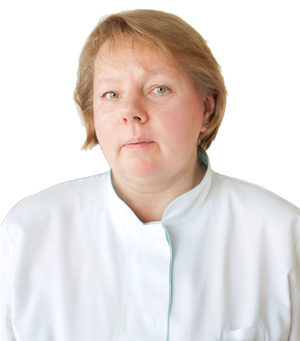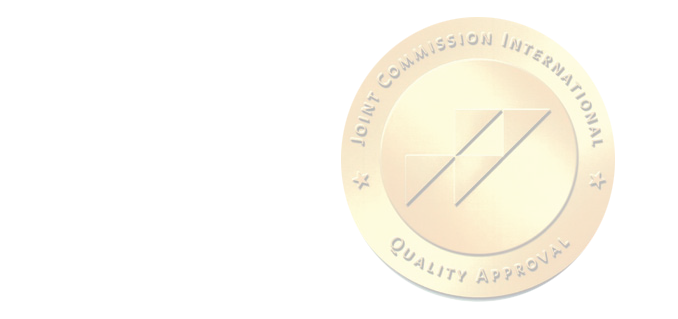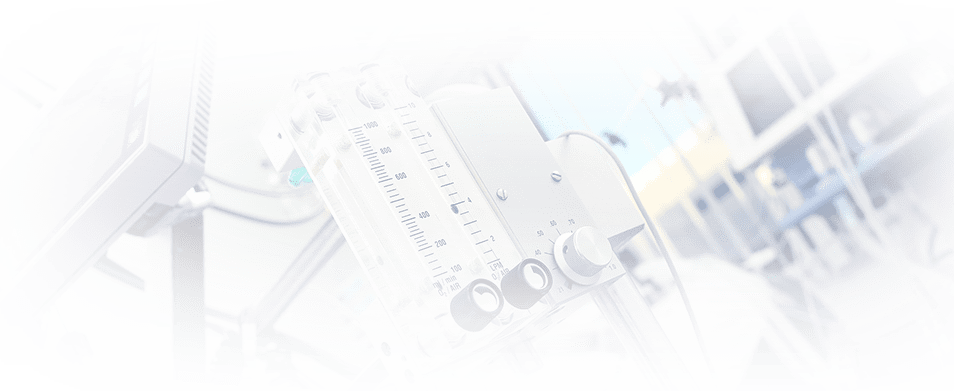Coronavirus

General practitioner (family doctor)
Gutorova Natalia
Experience 20 year
Doctor
What is it?
Coronavirus was first isolated from a sick person in 1965. It got its name because of the peculiarities of its structure.
Coronaviruses discovered before the 2000s caused acute respiratory infections in humans. For the most part, the disease had no serious complications, so its pathogens did not receive as much attention as, for example, influenza viruses. However, the situation changed dramatically in 2002-2003 when there was an outbreak of SARS in China. The patients were diagnosed with severe acute respiratory syndrome, which developed rapidly. It turned out that it was provoked by a coronavirus, subsequently named SARS-CoV. China was too late to inform WHO of the new virus threat, so the pathogen had time to spread outside the country. Cases were recorded in 33 countries, 775 people died, and the overall mortality rate was 9.6%. In 2012, the coronavirus reappeared again, but this time in the Middle East. Patients also developed severe pneumonia, but this time the cause was MERS-CoV coronavirus.
Studies have shown that 80% of people have specific antibodies to the strains of coronaviruses that cause SARS. This confirms that the latter are very common in the environment and have been around humans for a long time.
Pathways of transmission:
- airborne;
- air-dust;
- faecal-oral;
- contact.
The proportion of infections by strains of coronavirus is estimated at 12% of all cases of acute respiratory infections. And there is a short-lived immunity after illness, which means that a person can become ill again after a short period of time.
How did the outbreak start?
An outbreak of the new coronavirus 2019-nCoV has started in the Chinese city of Wuhan. In December 2019, medics isolated it for the first time from a pneumonia patient working at a local fish market. The new pathogen caused diseases of the respiratory system. Many patients developed acute respiratory syndrome with a severe course (destruction of pulmonary alveoli), leading to death.
In contrast to the situation in 2002, the Chinese authorities reacted promptly to the emergence of the problem and alerted the world about the new threat in time. Local authorities imposed a strict quarantine in Wuhan and adjoining towns, and all public events were cancelled. On 30 January, WHO declared the 2019-nCoV virus outbreak an international emergency.
What is known about the pathogen?
Studies have shown that the new 2019-nCoV coronavirus is 80% replication of the SARS virus. They use the same receptors to enter the human body. The source of the spread was the local population of bats.
The incubation period for 2019-nCoV is between 3 and 14 days. It is asymptomatic, but the carrier is a danger to others. Human-to-human transmission of SARS-CoV and MERS-CoV was not intensive; infection occurred mainly from animals or through very close contact with infected people. In the case of 2019-nCoV, the overall mortality rate was not very high, but the number of seriously ill people requiring hospitalization and expensive treatment was quite high.
Symptoms of coronavirus in humans
The disease begins as a common cold, making it difficult to diagnose early. The patient has a cough, headache and general weakness. Then the temperature rises sharply, the cough gets worse, and shortness of breath appears. On day 8-9, an acute respiratory syndrome develops, leading to lung damage. A bacterial infection may have set in. Almost 25% of patients developed a severe condition, but some had a mild, almost asymptomatic course.
What are the symptoms of the disease caused by the new coronavirus?
- Feeling of fatigue.
- Difficulty in breathing.
- High fever.
- Cough and/or sore throat.
If you have similar symptoms, consider the following:
- Have you visited high-risk areas in the last two weeks?
- Have you been in contact with anyone who has visited high-risk areas in the last two weeks?
You can get all the details by calling +7(495) 266-95-40 or visiting the covid hospital page.
Treatment and diagnostics
The exact diagnosis is determined by a PCR test. There is no specific cure for the new Chinese coronavirus, but medics are testing the effectiveness of the latest broad-spectrum antivirals.
Patients are prescribed supportive therapy. To treat pneumonia with respiratory failure, the use of extracorporeal oxygenation is recommended to keep the body alive. A special membrane oxygenated is used to draw blood from the patient's vein, which is purified, oxygenated and returned to the patient. If a bacterial infection has developed, antibiotics are also used.
Who can get sick?
A disease caused by the Chinese coronavirus can occur in anyone because our immune system is not familiar with it yet. However, the disease is not severe in all, this feature is still being studied. Nevertheless, the following people are at a risk group:
- people of retirement age;
- children;
- diabetics;
- patients with chronic diseases and weakened immune system.
Preventive measures
You should lead a healthy lifestyle, exercise and eat healthy food. You should not take popular antivirals prophylactically, because they don't work. You can buy pharmacy saline solutions to wash your nose and throat, and do it several times a day.
A medical mask can be worn to prevent infection, but ordinary products have little effect. Masks with HEPA filter class N95 or higher provide full protection. It is also useful to protect the mucous membrane of the eyes, at least you can wear usual glasses.
You should avoid culinary exotics and eat only well-cooked eggs, meat and fish. You should wash fruits and vegetables thoroughly and keep your hands clean.
If you have any signs of a cold, you should see a doctor straight away. During coughing, cover your mouth not with your hands, but with a tissue, which should be disposed of immediately. If droplets of sputum or saliva get on your hands, wash them immediately with soap and water, because they can become a source of spreading the coronavirus.
Wear a mask - protect yourself from coronavirus
- Gently cover your nose and mouth with the mask and secure it to reduce the gap between your face and the mask.
- Wash your hands thoroughly with soap and water after touching the used mask.
- Replace the mask with a new one every 2 hours.
- Do not reuse disposable masks. They should be thrown away after each use.
- You should wear a mask if you come into contact with people who have symptoms of an acute respiratory viral disease, or if you have similar symptoms.
Do not reuse the mask!
The use of the mask will be most effective only in conjunction with thorough hand hygiene.
For fans of conspiracy theories
At the end of January 2020, famous blogger Tyler Durden published an article "Did China Steal Coronavirus From Canada And Weaponize It". It states that the 2019-nCoV coronavirus is a product of developments by Chinese virologists working on secret biological weapons projects. The author reports that particularly virulent viruses were stolen from a Canadian NML laboratory in March 2019 and subsequently ended up in China. Later, Dr. Xiangguo Qiu and her husband Dr Keding Cheng, whom the author describes as Chinese agents working for the state's secret biological warfare programme, were dismissed from the lab. One of the research institutes involved in this programme, the Wuhan Institute of Virology of the Chinese Academy of Sciences, is located in Wuhan, China. The institute is located just 20 miles from the fish market that was the epicenter of the spread of the 2019-nCoV coronavirus. The blogger claims that these viruses are included in China's biological weapons program, so they are actively studied in several laboratories, the funding of which increases every year. The outbreak of a new coronavirus in Wuhan could be related to the creation of these weapons.
It is difficult to say how reliable such information is. The truth is that there is indeed such a laboratory in Wuhan. It was created after the SARS-CoV outbreak specifically to study the pathogens that cause SARS pneumonia. Such facilities usually have a high degree of biological protection, so it is difficult to allow dangerous biomaterial to leak out into the external environment.
However, many virologists and epidemiologists say that the world must prepare for new viruses that will cause massive cases of severe acute respiratory syndrome.
Q&A
How is coronavirus transmitted?
- Airborne (release of the virus by coughing, sneezing, talking).
- Air-dust.
- Contact - by contact with any contaminated surface, such as a door handle. People also become infected when they touch their mouth, nose, or eyes with contaminated hands.
Can it be cured?
Yes, sure. However, there is no specific antiviral medication for the new coronavirus.
Viral pneumonia, the main and most dangerous complication of coronavirus infection, cannot be treated with antibiotics. If pneumonia develops, treatment is aimed at maintaining lung function.
How can you protect yourself from being infected with the coronavirus?
Keep your hands clean and wash them often with soap and water or use disinfectant.
Try not to touch your mouth, nose or eyes with unwashed hands.
Carry hand disinfectant with you so you can clean your hands in any situation.
Always wash your hands before you eat.
- Reduce touching surfaces and objects in public places as much as possible.
- Carry disposable tissues with you and always cover your nose and mouth when you cough or sneeze, and be sure to dispose of them after use.
- Do not eat food or snacks from shared packages or dishes if other people have dipped their fingers in them.
- Avoid greeting handshakes and kisses until the epidemiological situation has stabilised.
- At work, clean surfaces and devices you touch regularly.
What can you do at home?
- Tell your children about the prevention of coronavirus.
- Explain to your children how germs spread and why good hand and face hygiene are important.
- Make sure everyone in the family has his/her own towel, remind them not to share toothbrushes and other personal hygiene items.
- Ventilate your flat frequently.




